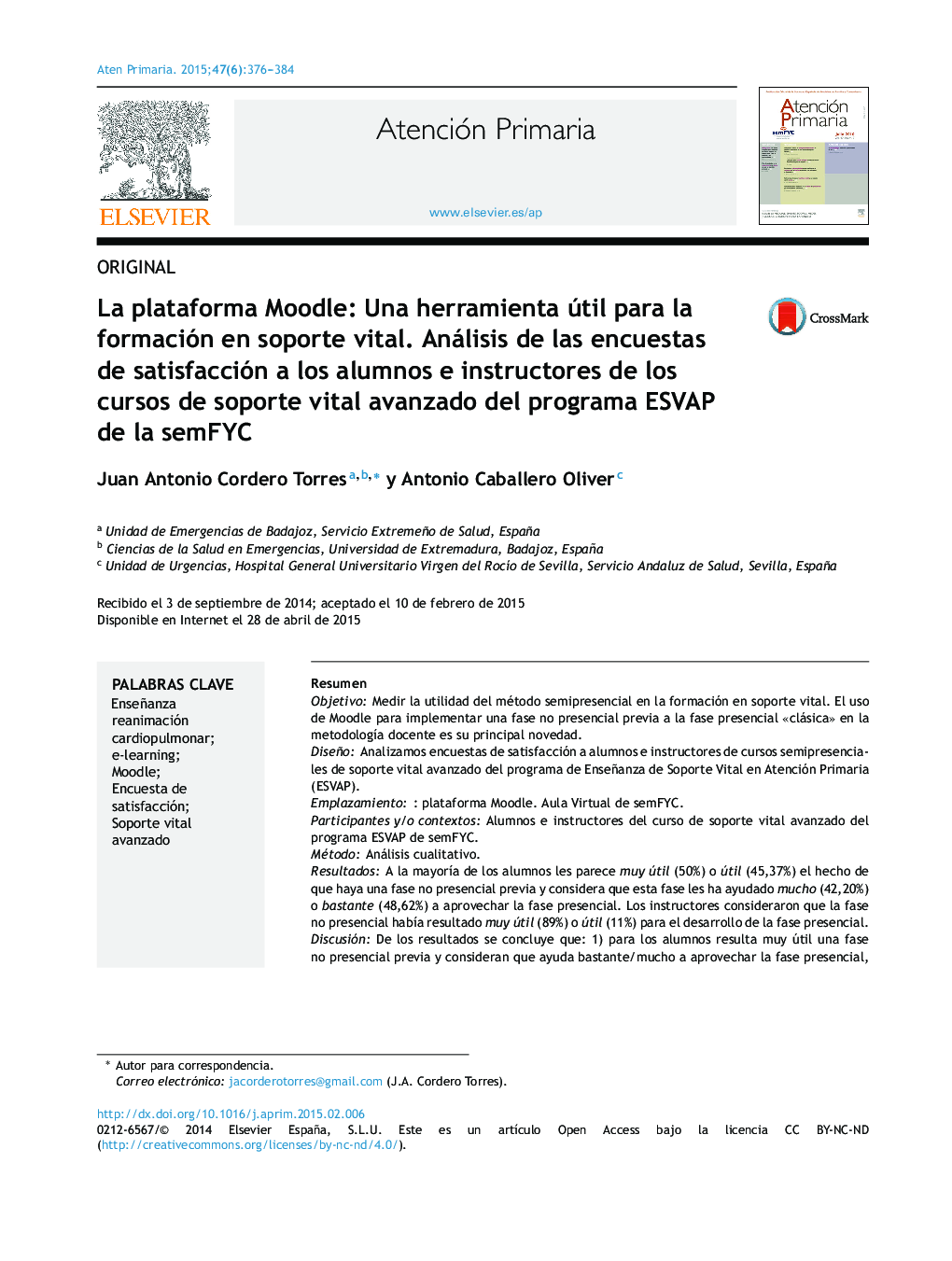| Article ID | Journal | Published Year | Pages | File Type |
|---|---|---|---|---|
| 3457074 | Atención Primaria | 2015 | 9 Pages |
ResumenObjetivoMedir la utilidad del método semipresencial en la formación en soporte vital. El uso de Moodle para implementar una fase no presencial previa a la fase presencial «clásica» en la metodología docente es su principal novedad.DiseñoAnalizamos encuestas de satisfacción a alumnos e instructores de cursos semipresenciales de soporte vital avanzado del programa de Enseñanza de Soporte Vital en Atención Primaria (ESVAP).Emplazamiento: plataforma Moodle. Aula Virtual de semFYC.Participantes y/o contextosAlumnos e instructores del curso de soporte vital avanzado del programa ESVAP de semFYC.MétodoAnálisis cualitativo.ResultadosA la mayoría de los alumnos les parece muy útil (50%) o útil (45,37%) el hecho de que haya una fase no presencial previa y considera que esta fase les ha ayudado mucho (42,20%) o bastante (48,62%) a aprovechar la fase presencial. Los instructores consideraron que la fase no presencial había resultado muy útil (89%) o útil (11%) para el desarrollo de la fase presencial.DiscusiónDe los resultados se concluye que: 1) para los alumnos resulta muy útil una fase no presencial previa y consideran que ayuda bastante/mucho a aprovechar la fase presencial, y 2) los instructores consideran que la fase no presencial ha ayudado bastante en el aprovechamiento y eficiencia de los talleres en la fase presencial.
ObjectiveThe aim of this study is to assess the validity and use of a mixed method of training in life support. The use of Moodle to implement an online pre-sessional phase prior to a “classic” classroom phase of teaching in this type of course is the main novelty.DesignAnalysis of satisfaction questionnaires of students and instructors of a mixed course in the advanced life support program of SemFYC (ESVAP).SettingMoodle platform. semFYC Virtual Classroom.Participants and/or contextsStudents and instructors participating in the semFYC advanced life support program, ESVAP.MethodQualitative analysis.ResultsThe majority of students rate as very useful (50%) or useful (45.37%) the existence of an online pre-sessional phase, and consider that it has helped them very much (42.20%) or quite a lot (48.62%) to make the most of the face-to-face sessions. For instructors, they considered that the existence of an online pre-sessional phase was very useful (89%) or useful (11%) for the development of the face-to-face sessions.DiscussionThe analysis of the results concluded that: 1) the students considered a prior non-face to face phase as very useful, and it helped them much/very much in the face to face phase, and 2) the instructors believe that the non-face to face phase had helped them a lot in the presentations and efficiency of the workshops in the face-to-face phase.
